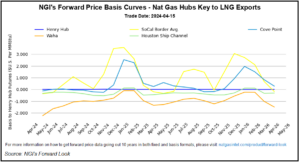Oil | E&P | NGI All News Access
WTI Oil Prices to Hit $75 Before End of Year, Says Raymond James
© 2024 Natural Gas Intelligence. All rights reserved.
ISSN © 2577-9877 | ISSN © 2158-8023 |

Markets
Natural gas futures jumped higher Tuesday afternoon after reports of a pipeline incident in Alberta broke up an otherwise quiet shoulder season day of trading. At A Glance: Production at 97.4 Bcf/d Weak spring season demand National Avg. back above $1 The May Nymex contract rose 4.1 cents day/day to settle at $1.732/MMBtu. Futures spiked…
April 16, 2024Mexico
Markets
By submitting my information, I agree to the Privacy Policy, Terms of Service and to receive offers and promotions from NGI.